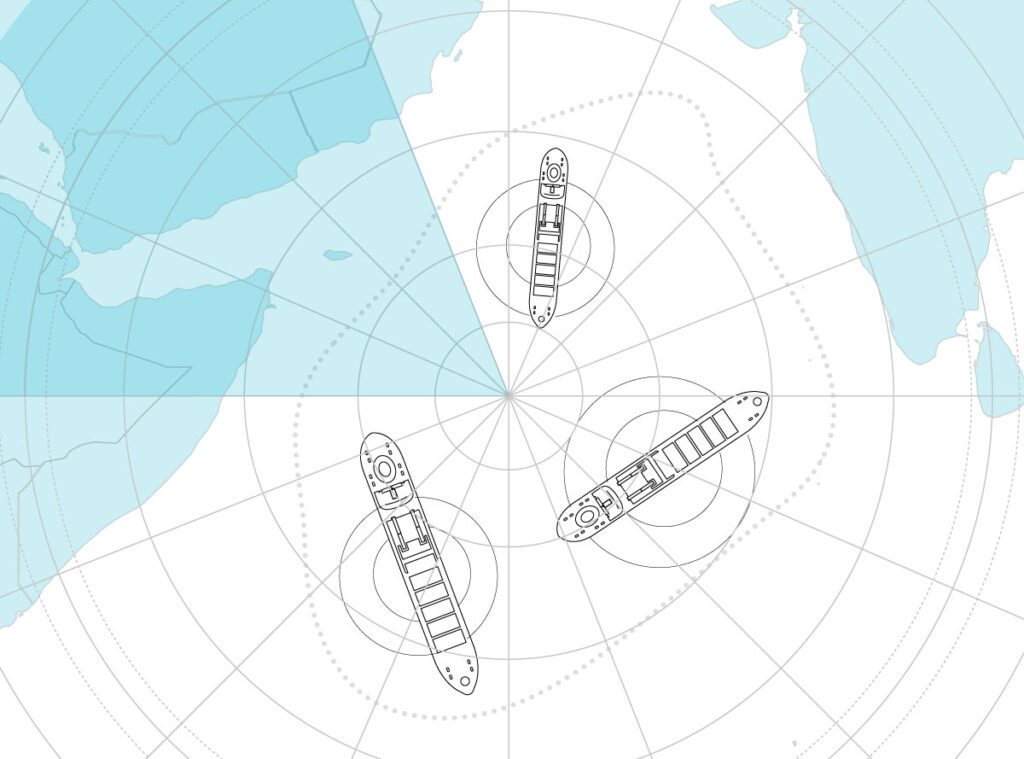Interference detection
GNSS jamming, spoofing, & disruptions
Ensuring the integrity of GNSS and RF communications is a top priority for today’s governments and commercial entities. With GNSS jamming, spoofing, and other signal disruptions threatening critical operations across various sectors, Spire’s space reconnaissance capabilities offer advanced solutions to detect, analyze, and counter these interferences, ensuring the real-time reliability of essential technologies and services.
Product types
Spire RF interference detection product offerings
| Product type | Frequency | Description | Data format | Signal processing |
|---|---|---|---|---|
| Historical data | L1, L2, L5 | Subscribe to archive data of RF conjunction and interference events | CSV | Generate spectrograms of GNSS signal collections to support pattern recognition and historical signal behavior mapping |
| Near-real-time monitoring | L1, L2, L5 | Task-able collections for tracking GNSS anomaly tracking | CSV | Generate spectrograms of GNSS signal collections to support pattern recognition |
| Custom collection | L1, L2, L5 | Dedicated satellite observations for targeted monitoring in high-risk zones. | CSV, geoJSON | Enrich data with signal enhancement data products- high resolution imagery and fingerprinting library |
| Aviation GNSS interference | L1 | ADS-B anomaly detection, regional alerting, and GNSS reliability insights for flight safety. | API, web-based dashboards, downloadable reports | Enrich data with signal enhancement data products – high resolution imagery and fingerprinting library |
Unmatched signal detection capabilities
Spire’s world-class RF detection network uses miniaturized satellite technologies from Low Earth Orbit (LEO) to detect, characterize, and geolocate various interference sources in real time.
GNSS jamming
Spire’s satellites are deployed on orbit to continuously monitor signal degradation patterns, analyzing Position Dilution of Precision (PDOP), ADS-B anomalies, and GNSS signal integrity to detect pattern behavior and jamming zones.
By correlating interference patterns with satellite-based ADS-B anomalies, Spire provides unmatched insights into how jamming impacts aviation, shipping, defense, and other critical operations. Additionally, geolocation methods like Time Difference of Arrival (TDOA) and Frequency Difference of Arrival (FDOA) enable the precise identification of interference sources, even in contested or remote areas where terrestrial-based monitoring is limited.
Spoofing
Spire uses advanced TDOA and FDOA geolocation techniques to detect and pinpoint GNSS spoofing attacks, whether on land, at sea, or in the air. By detecting and analyzing Doppler inconsistencies, unexpected timing variations, and ADS-B anomalies, Spire identifies counterfeit signals attempting to deceive receivers.
GNSS disruption monitoring
Spire’s satellites can be deployed to scan the RF spectrum, continuously detecting any sort of signal that might indicate interference. Our proactive approach to signal monitoring enables our customers to identify unauthorized or malicious transmissions that could disrupt satellite communications, radar, or emergency networks. Through multi-source data fusion, we integrate GNSS signal integrity, ADS-B anomalies, and direct RF monitoring to create a comprehensive, industry-leading interference detection framework.
How our signal detection services work, from identification to decision
Spire takes a multi-layered approach to interference detection, combining real-time monitoring, historical signal analysis, and advanced geolocation techniques to detect and respond to threats. Whether integrating into existing monitoring systems or building a custom solution, Spire provides the data, insights, and tools to act.
Our satellites detect RF signals across VHF, UHF, L, S, and X bands, enabling multi-band awareness for interference events involving SATCOM, radar, and tactical communications across both civilian and defense environments.
Global satellite monitoring from LEO
Spire’s LEO-based satellite constellations scan the RF spectrum continuously for GNSS anomalies and unauthorized transmissions. By integrating signal degradation analysis, Doppler tracking, and ADS-B accuracy monitoring into the process, Spire provides persistent global surveillance – even in the most remote or contested areas.
Geolocation & threat characterization
Spire uses advanced techniques like TDOA, FDOA, and Doppler shift to pinpoint interference sources with a high level of precision. Advanced signal classification methods further differentiate between intentional interference, environmental signal degradation, and system malfunctions, providing clear and reliable detection results.
Actionable detection and API integration
Spire delivers high-confidence geolocation reports and interference alerts in real-time through secure APIs. Users can define their area of interest (AOI), configure monitoring parameters, and receive automated notifications of emerging threats. Processed signal detections are typically available within decision-making in mission-critical environments.
Get in touch
Ready to gain a clearer picture of the signals around you?
Contact us today to discuss how Spire’s RF detection capabilities can help you detect, geolocate, and respond to interference threats before they get out of hand.
